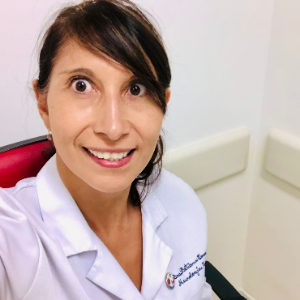Title : Pediatric febril status epilpeticus. Case serie of children admitted at Hospital de Niños Dr. O. Alassia Santa Fe, Argentina, period 2015 until 2018
Abstract:
Introduction: The status epilepticus is a neurological emergency that needs intensive measures and also has high mortality. The International Leage Against Epilepsy (ILAE) in 2015 sets a new definition: is a condition resulting either from the failure of the mechanisms responsible for seizure termination or from the initiation of mechanisms, which lead to abnormally, prolonged seizures (after time point t1). It is a condition, which can have long-term consequences (after time point t2), including neuronal death, neuronal injury, and alteration of neuronal networks, depending on the type and duration of seizures. Fever the most frequent etiology in the pediatric age.
Principal aim: to describe epidemiological aspects of febril status epilepticus suffered by children admitted from 01.01.2015 to 14.04.2018.
Secondary aims: to stablish etiology and predisposing factors, to analyze electrencephalographical patterns and to revise treatment protocols and antiepileptic drugs schemes used
Material and method: 53 children admitted into Hospital de Niños Dr. O. Alassia with SE febril diagnosis. Period of time: from 01.01.2015 to 14.04.2018. Analysis of clinical histories and complementary studies, patient evaluation, and review of different treatments.
Results: 53 patients, 31 males and 22 women, medium age 1,65 years. Electroencephalograms were practiced to 36 patients, 6 with paroxysmal focal activity and 2 with generalized activity. 34 patients fulfilled neuro-images, 8 were pathological. Clinical presentation as first event 41 patients, 7 of them had pathological precedents. Etiology of feverish area: 5 encephalitis, 6 pneumonias, 4 gastroenteritis, 1 sepsis, 1 postvaccinal, 36 upper-airway infection respiratory. Treatment: 50 needed treatment of the first line with benzodiazepines, 11 of them had pre hospital treatment, only 4 needed anesthetics.
Conclusions: Median of age of presentation 1,65 years. Etiology most frequent was respiratory. 36 electroencephalograms were practiced, only 8 of them were pathological. Only 11 received prehospital treatment, only 4 needed drugs anesthetics. 41 patients had clinical presentation as first event, 7 of them had pathological precedents.
Audience Take Away
- The audience will learn about the realities of other countries
- This research will help the audience to design prehospital treatment guides
- This research shows the importance of teaching the status treatment guide in medical emergencies




